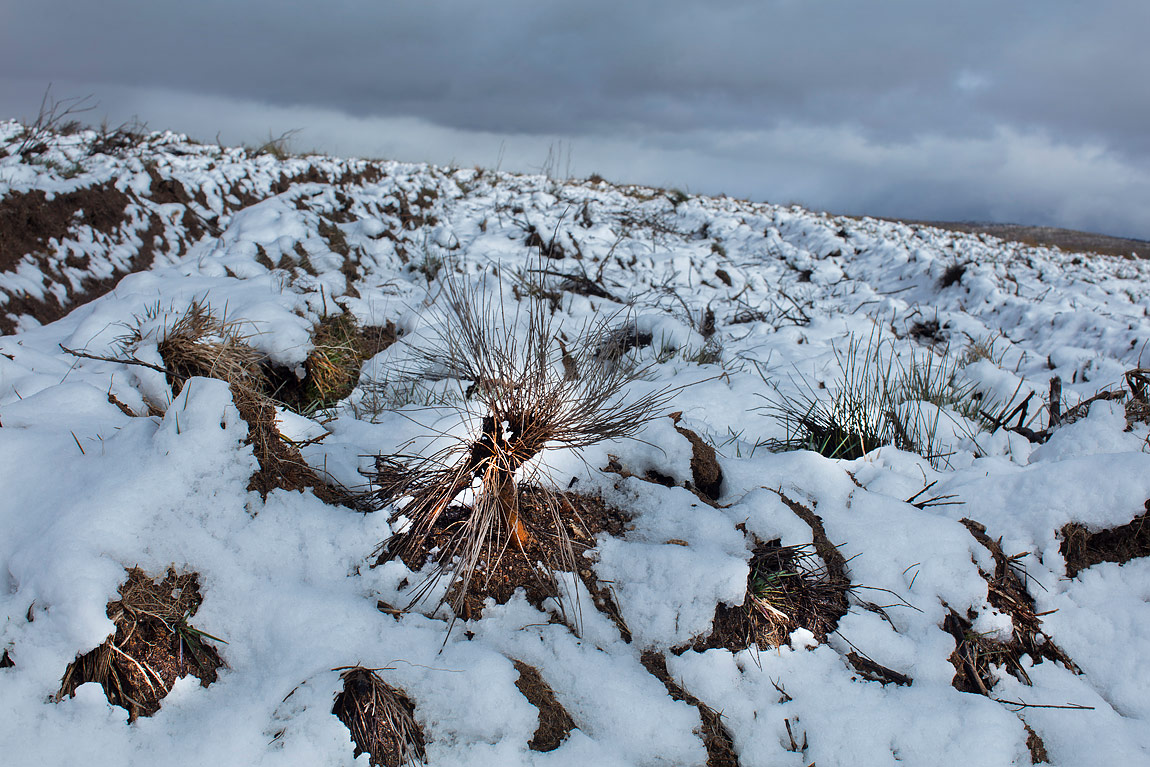Rainfall is high, and temperatures are low in Barroso, a high-altitude plateau region in the northwest of the Vila Real district (Portugal). The landscape is marked by rye and potato fields, and on the slopes of the valleys, by meadows that are always humid, even in summer, where the Barrosã cattle graze, animals with short heads, broad foreheads, large eyes and horns curved in the shape of a lyre. In the drier slopes, the vegetation is poorer and only supports sheep and goats. The climate does not allow the growth of vineyards, olive and fruit trees. Pine trees are scarce. Oaks predominate and, around the humid meadows, form a kind of "screen". Corn is grown in the valleys. The landscape is severe, bare, and monotonous in colour - it completely contrasts with that of the north coast of the country.
At the beginning of last March, the region snowed. As this is an infrequent event in Portugal, I rushed to see and photograph it. The snow layer was not thick, but it had completely changed the landscape. The sky had clouds, but now and then, the sun came out for a few minutes. I marvelled at seeing some plants among the snowflakes. It was an ephemeral mosaic of browns and whites, which disappeared after a few hours when snowfall ended. The scenario would change radically a few weeks later in the spring. Many of the dry plants will burst, and everything will turn green and colourful as flowering begins. This landscape reminded me of the necessary rest so that life can then resume its rhythm. Post-production of the image was minimal.


